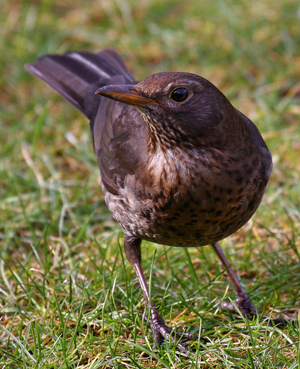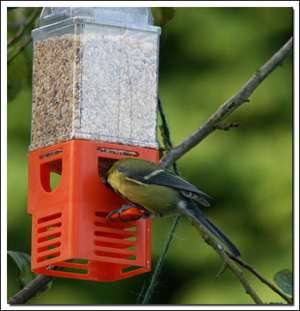A real expert on photographing our winged neighbours tells us the secret of his success
One of the most impressive photographers we have the privilege of enjoying on the DPNow forum and galleries is Paul (best know by his forum nickname, Pops). Paul is an enthusiastic garden bird photographer. Many of his pictures are extraordinarily good, considering heís not a professional.
I thought it would be interesting to learn from the master. Bagging pictures like Paulís is just as much about preparation - and I donít mean sorting your lenses and memory cards out - as the skill in framing and pressing the shutter release at the right time.

Donít blame the moggies!
You need to get, what can be a remarkable variety of birds (Paul is based in the UK, incidentally), to come to your garden and feel at ease there. Iíve tried to entice my local feathered friends, but itís not as easy as you might think. I suggested to Paul that the large feline population in my neighbourhood (including two of our own) might be the problem.
"I also have cats in the neighbourhood, but they hardly deter the birds at all, mainly because my feeders are situated close to a tree or shrubs that gives them safety in seconds." So thatís one theory discounted. And so here is what Paul recommends:

Creatures of habit
"My main feeder station is made up of four containers. two for seed, one for nuts and one for fat balls which are a favourite with all types of birds. This station also has two small trays onto which I place food every morning. They are creatures of habit and I often find several birds actually waiting for me to add food to these trays and no sooner have I turned away than they are down and feeding. It is important that none of the feeders are allowed to stand empty.
"I also have two of the wooden bird houses and four other single feeders dotted around the garden all sited to give the birds quick access to safety. In addition to all of this I also scatter scraps onto the lawn, the same area each time. These scraps consist of any food left over or maybe going a bit stale. i.e. bread, cake, biscuits, bacon fat, etc., etc.
"This gives the larger birds a supply of food like the Magpie, Jackdaw, Rooks etc. I have noticed that while the small birds keep up continuous visits throughout the day the larger ones visit at regular times within a half hour or so. Rooks and Jays for instance appear around 8.30 each morning and then again in late afternoon. I rarely see these at other times.
"I'm lucky in that I am home every day and can spend time observing so itís a bit unfair to expect a person who goes out to work to give as much attention to them as I do.

Regular feeding
"The main things to remember are; Regular feeding throughout the year. Winter feeding is very important because their natural food source is virtually nonexistent. If you maintain regular feeding through winter they will be firm visitors for the rest of the year and will bring their young with them in spring. This establishes a regular feeding pattern for them.
"Feeders should always topped up, with quick access provided to safety in case of predators plus, a quiet garden. If children are frequently playing in the garden then you won't be getting regular visits at regular times.
"A person carrying out work in the garden won't deter them very much and in fact if digging is being done don't be surprised at having Blackbirds and Robins very close, indeed feeding from the freshly dug area. The trick is to carry on normally without any sudden harsh movements.
Bird bath
"A bird bath is also a must and needs cleaning out weekly. It's easy to forget that they need a constant supply of water for drinking and bathing. When I got my first shots of birds taking a bath it was a real ego trip especially with the bath being only eight feet from the camera.
"If possible put up some nesting boxes. If you haven't got any now but are able to put them up, the best time is late August/early September. This gives them time to look them over during the winter months and decide if they are going to use them or not. Putting several close together can encourage a whole flock of sparrows because they like to nest close to others. I had three out of five taken up last year but only one this year so be prepared for disappointment.
Hide yourself
"All of this is fine for the birds but for photographing them you also have to consider where you are going to be shooting from. I made sure that my main feeder station was close to my shed so I can sit in the doorway with two tripod legs outside and one inside the shed.
"When you think the feeder station is less than 12 feet away, you can see how I get my close-ups. This also allows me to photograph without bothering too much about the weather.
"I used to have an old shower curtain hung in the doorway so that just the lens poked through but they are so used to me now I have no need for it, once again proving that they are creatures of habit and will soon adjust to objects being there."
So there you are, with some patience and an uncomplicated strategy, you could eventually enjoy your garden birds as never before - and cherish some great bird images at the same time. If you do achieve such success, donít forget to show your pictures here on DPNow!
Reader feedback:
Discuss this story:




